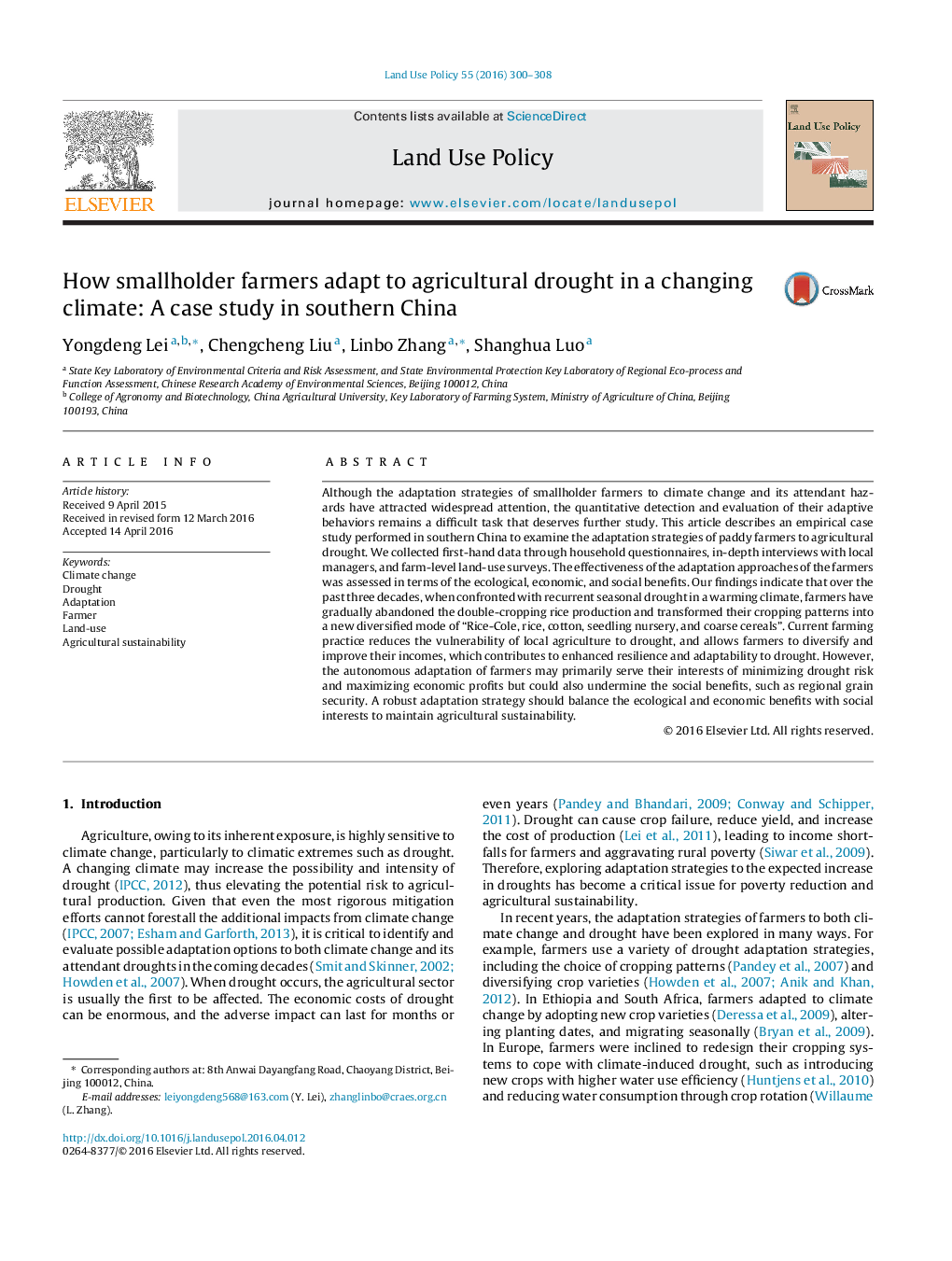| Article ID | Journal | Published Year | Pages | File Type |
|---|---|---|---|---|
| 6547271 | Land Use Policy | 2016 | 9 Pages |
Abstract
Although the adaptation strategies of smallholder farmers to climate change and its attendant hazards have attracted widespread attention, the quantitative detection and evaluation of their adaptive behaviors remains a difficult task that deserves further study. This article describes an empirical case study performed in southern China to examine the adaptation strategies of paddy farmers to agricultural drought. We collected first-hand data through household questionnaires, in-depth interviews with local managers, and farm-level land-use surveys. The effectiveness of the adaptation approaches of the farmers was assessed in terms of the ecological, economic, and social benefits. Our findings indicate that over the past three decades, when confronted with recurrent seasonal drought in a warming climate, farmers have gradually abandoned the double-cropping rice production and transformed their cropping patterns into a new diversified mode of “Rice-Cole, rice, cotton, seedling nursery, and coarse cereals”. Current farming practice reduces the vulnerability of local agriculture to drought, and allows farmers to diversify and improve their incomes, which contributes to enhanced resilience and adaptability to drought. However, the autonomous adaptation of farmers may primarily serve their interests of minimizing drought risk and maximizing economic profits but could also undermine the social benefits, such as regional grain security. A robust adaptation strategy should balance the ecological and economic benefits with social interests to maintain agricultural sustainability.
Related Topics
Life Sciences
Agricultural and Biological Sciences
Forestry
Authors
Yongdeng Lei, Chengcheng Liu, Linbo Zhang, Shanghua Luo,
